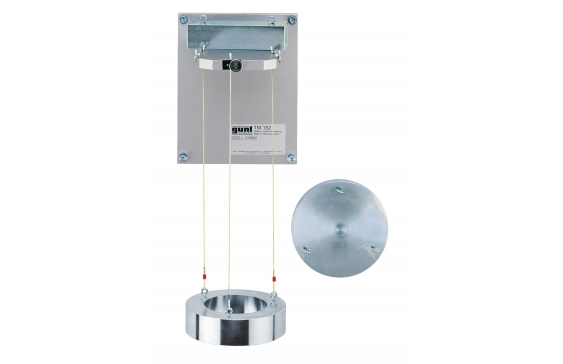TM 162 Bifilar/trifilar suspension of pendulums

In a bifilar suspension, the pendulum body is suspended over two threads. The pendulum body oscillates in a plane purely translationally without rotation. This kind of pendulum can be considered as a mathematical pendulum. In a trifilar suspension with three threads, the pendulum body is set in a torsional vibration. The torsional vibration can be used to determine the moment of inertia by experiment.
The TM 162 unit can be used to study pendulum swings with bifilar or trifilar suspension. A beam, a cylinder or a circular ring are used as pendulum bodies. The length of the threads can be adjusted using clamping devices. The moments of inertia of the pendulum body can be calculated from the measured oscillation period. The oscillation period can be varied by changing the thread length.
The experimental unit is designed to be fixed to a wall.
- ideal mathematical pendulum can be demonstrated
- moment of inertia in an experiment on a rotary pendulum
Pendulum bodies
- beam
- LxWxH: 40x40x160mm
- mass: 2kg
- cylinder
- diameter: 160mm
- height: 19mm
- mass: 3kg
- circular ring
- outer diameter: 160mm
- inner diameter: 100mm
- height: 41mm
- mass: 4kg
Thread length: up to 2000mm
Stopwatch: 1/100s
- investigation of the vibration behaviour of various pendulum bodies in bifilar and trifilar suspension
- investigation of a mathematical pendulum (bifilar) and a physical pendulum (trifilar)
- choice of three pendulum bodies: beam, cylinder, circular ring
- change the thread length with a clamping device
- stopwatch to measure the oscillation period
- determine the mass moment of inertia
- bracket for wall mounting
- influence of thread length on the oscillation period
- determine the mass moment of inertia
